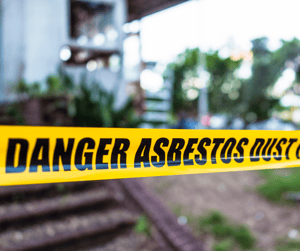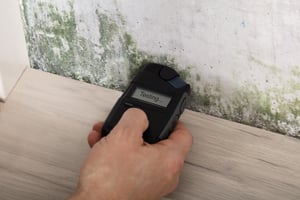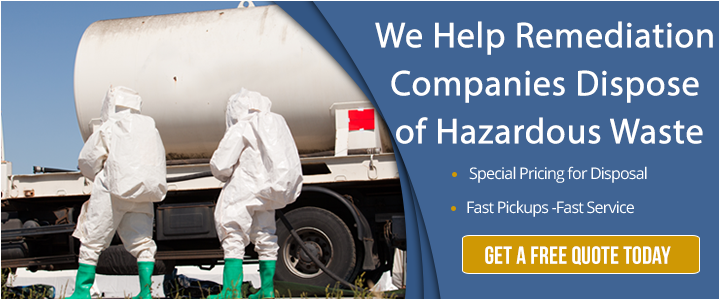The EPA has slammed the door on the use of chrysotile asbestos - the only type of asbestos that up until the ban was used in the United States.
The U.S. Environmental Protection Agency (EPA) recently announced a final rule that prohibits the ongoing uses of chrysotile asbestos, which have been linked to cancer and more than 40,000 deaths in the United States each year.
If your business is in an industry that uses chrysotile asbestos, including construction, automotive, shipbuilding, textiles and manufacturing, you may need to dispose of this toxic substance safely.
The Ban On Asbestos
The EPA announced a comprehensive ban on asbestos on March 18. Decades after a partial ban prevented the use of other types of asbestos, this new law prevents the use of chrysotile asbestos, a substance found in products like brake linings and gaskets. Manufacturers also use chrysotile asbestos to manufacture products like chlorine bleach and sodium hydroxide.
other types of asbestos, this new law prevents the use of chrysotile asbestos, a substance found in products like brake linings and gaskets. Manufacturers also use chrysotile asbestos to manufacture products like chlorine bleach and sodium hydroxide.
The ban is an expansion of a 2016 amendment to the Toxic Substances Control Act, which overhauled regulations that governed everyday products found in homes and businesses, from household cleaners to furniture.
Although chrysotile asbestos is the most common type of asbestos used in the world, it’s banned in 50 other countries.
Chrysotile asbestos, also known as white asbestos, is a fibrous mineral that belongs to the serpentine group of minerals. It is the most commonly used type of asbestos and has been extensively used in various industries due to its desirable physical properties.
Chrysotile asbestos fibers are long, flexible and resistant to heat, chemicals and electricity. These properties made it a popular choice for use in a wide range of products, including building materials, automotive components, textiles and industrial applications.
However, chrysotile asbestos is also a known carcinogen, and exposure to its fibers can lead to serious health issues such as lung cancer, mesothelioma and asbestosis. Despite these regulations, chrysotile asbestos remains present in older buildings and products, posing a risk of exposure during renovation, demolition or other activities that disturb asbestos-containing materials.
What The Asbestos Ban Means For Your Business
If you’re a business that manufactures or uses products that contain chrysotile asbestos, the EPA has set compliance deadlines to transition away from its use. The law requires that these deadlines are “as soon as is practicable for each use while also providing a reasonable transition period,” according to the EPA.
There are currently eight chlor-alkali plants in the United States that still use asbestos diaphragms. While the EPA is providing a transition time to phase out the use of this asbestos, the agency has immediately banned the import of asbestos for chlor-alkali use.
If your business has any products that contain chrysotile asbestos, or has the substance on hand at a manufacturing facility, it is important that you begin putting an effective disposal plan in place to safely remove and dispose of any leftover asbestos that can pose dangers to the environment and public health.
Even if your company doesn’t manufacture or use products containing chrysotile asbestos, any regulations that oversee the use of this substance can still impact you, especially if your business is in the construction industry.
Because chrysotile asbestos has been in use for decades, it's possible that it could be found during construction projects, as can other types of asbestos. When a project disturbs the ground, such as during construction or even a natural weathering process, asbestos can be released.
Asbestos is also used in many building construction materials, with some estimates showing it is a component in nearly 3,000 types of materials. When materials like insulating board, thermal insulation and sprayed insulation are disposed of, asbestos can enter ground soil. Chrysotile asbestos is also used in building materials like roofing shingles, insulation, cement pipes and floor tiles.
When this substance is discovered, proper asbestos contaminated soil disposal is needed.
How Asbestos Waste Is Removed
Registered hazardous waste disposal companies can safely transport to an approved treatment, storage or disposal facility (TSDF).
facility (TSDF).
In some situations, companies can transport their own asbestos waste during an abatement process, but only if you have less than 50 pounds of asbestos waste and meet the following rules:
- You must transport the waste in closed containers that are packed in a manner that prevents them from tipping over, spilling or breaking during transport.
- Do not mix in other hazardous waste materials within the same container.
- You are the producer of that hazardous waste, and you produce no more than 100 kg of hazardous waste in any month or no more than 1,000 kg at any one time.
Any hazardous waste generated during asbestos abatement that is transported to a disposal site must have a properly completed Uniform Hazardous Waste Manifest. The generator must also obtain an EPA Identification number to complete the manifest.
When soil contamination is discovered, there are generally two options when asbestos is involved: An asbestos litter picking method or excavation.
When asbestos is visible to the eye, such as in large fragments, a litter picking method may be used. A contractor will come to the site, bag the contaminated pieces and remove them from the property. This contractor should put into place adequate control measures to ensure no further contamination occurs.
Excavation is the full removal of contaminated soil from the site using heavy machinery. When the asbestos is scattered and in fibrous form, this method is used. A company will place the contaminated soil in a heavy goods vehicle (HGV) and transport it to the appropriate landfill or waste site that can accept asbestos.
What The Best Disposal Company Should Offer
An experienced company will ensure any excavated contaminated soil or any materials containing asbestos you have at your facility safely arrive at a disposal site that can accept them.
The best disposal companies should offer a walk-through program at your site to determine how your waste should be transported. A walk-through program is consultative in nature and evaluates your waste procedures. A hazardous waste disposal company should also:
- Be able to identify waste streams through profiling and testing
- Transport your waste to the proper recycling and disposal sites
- Offer evidence that your waste has been properly disposed of
- Provide the documentation and information necessary for transport, including manifests
When looking for a hazardous waste disposal company, ensure that the vendor you choose is part of the California Department of Toxic Substances Control’s Registered Hazardous Waste Transporter Database. A hazardous waste transporter registration is valid for only one year, so conducting annual environmental audits of vendors handling your waste can help you ensure the disposal company you have been working with is still licensed to do business in California.
As laws continually evolve, partnering with a reputable hazardous waste disposal company ensures that your contaminated soil and asbestos-containing materials are safely transported to designated disposal sites, providing peace of mind and compliance with environmental regulations.


Comment